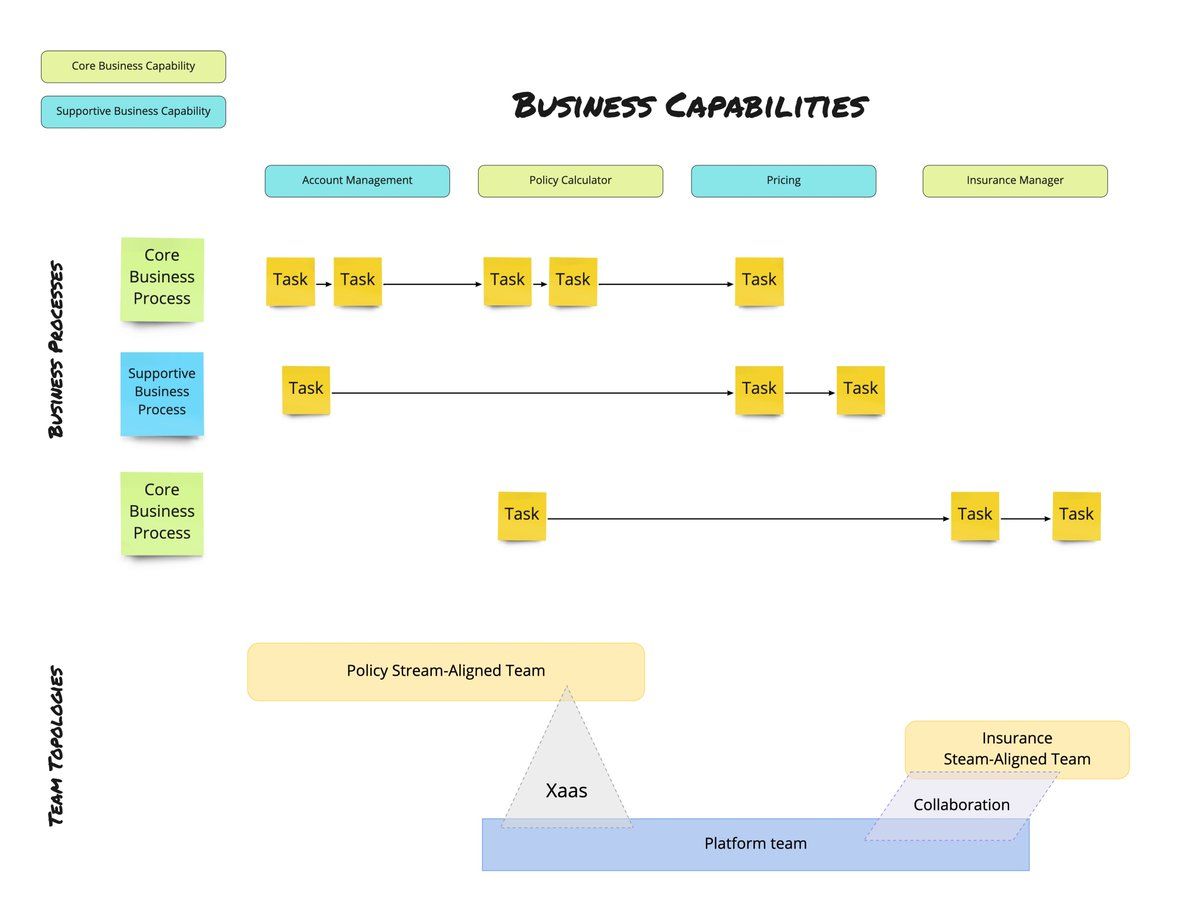-
I'm experimenting with a way to visualize 👉 Capability/Domain Responsibilities Boundaries 👉 Process Coupling 👉 Team Structure to deliver them! I'm trying to combine: 👉 Business Capabilities 👉 Business Processes 👉 @TeamTopologies
-
I'm using Business Capabilities and Business Processes that I learned in the @VaughnVernon and @tjaskula book I saw less barriers to communicate intention and meaning with business instead of the DDD language about Bounded Contexts and Subdomains amzn.to/3a2gYvy
-
@VaughnVernon @tjaskula I think this type of diagram could lead to some Framing Bias. We might think that the optimal is to have one Steam-Aligned Team per Business Capability. Which might or might not apply depending on the business needs... Doing another iteration in a mnt en.wikipedia.org/wiki/Framing_effect_(psychology)
-
@VaughnVernon @tjaskula Organizing Teams based on Business Processes instead of Business Capabilities. This can be also an option. Yet, building teams around business capability looks more sensible due to their nature.
-
@VaughnVernon @tjaskula 👉 Business Capabilities don't change often 👉 Business Processes are rapidly changing to adapt to the user needs. If we aim for Long-Lived Teams, building teams around business capabilities looks like a better approach IMHO.
-
It also can be a good exercise to do with other people. 👉 Which teams are delivering those business capabilities? 👉 How are teams communicating this business process dependencies? We can have great outcomes in understanding how other people think of teams are organized

